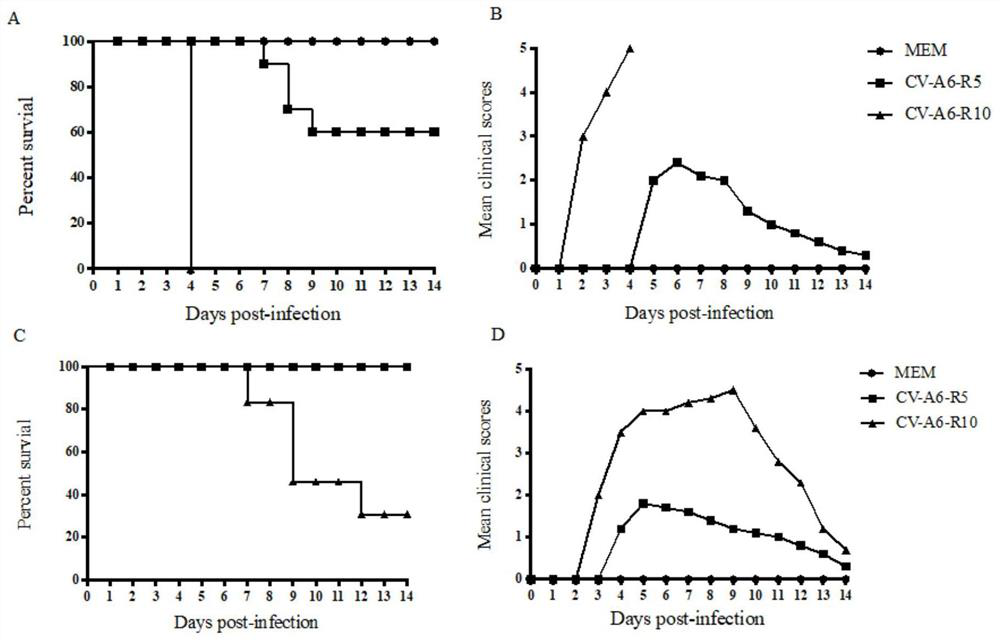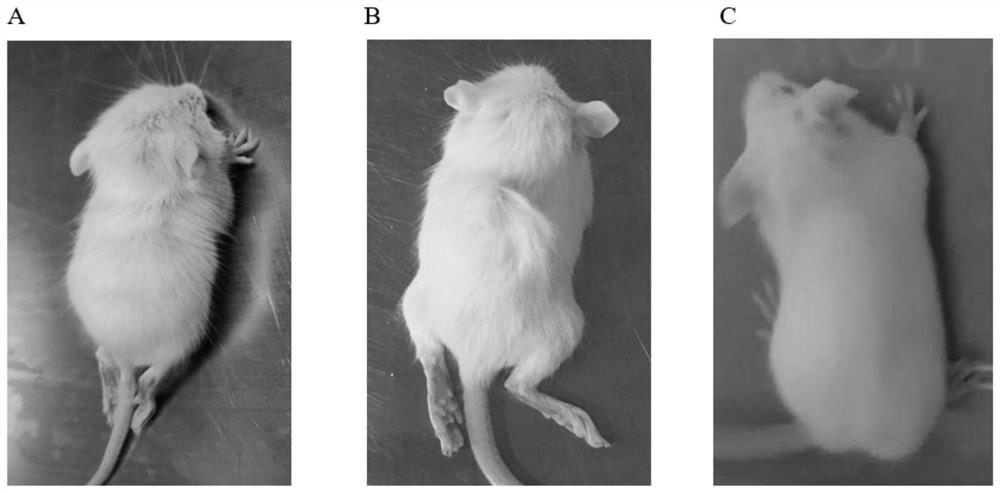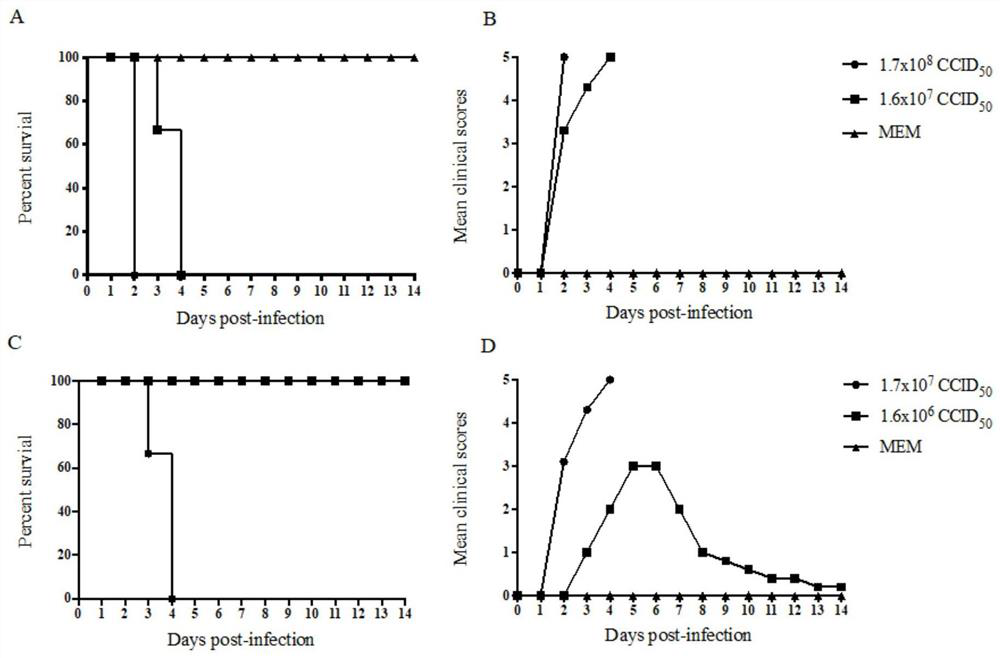Group of coxsackie group A 6 virus mutant strains and application thereof
A mutant strain and virus technology, applied in the field of medicine and biology, can solve the problem of no window period for primary immunization and booster immunization, and achieve strong growth ability and obvious effect of infection
- Summary
- Abstract
- Description
- Claims
- Application Information
AI Technical Summary
Problems solved by technology
Method used
Image
Examples
Embodiment 1
[0064] Example 1: Isolation and purification of CV-A6 RD cell adapted strain
[0065] The CV-A6-HEV69 / XY / CHN / 2017 virus strain was isolated from RD cells, cultured for 8 generations, and purified by 3 serial terminal dilutions to obtain 19 clones. Primers were designed to amplify the full-length genome of the virus, and the products were sent to Shenggong for sequencing. The whole genome sequence of each clone was analyzed, the nucleotide and amino acid sequences were compared, and they were divided into 7 genotypes according to the amino acid differences.
[0066] Purified virus by limiting dilution:
[0067] (1) Preparation of cell culture plate: inoculate RD cells in a 96-well cell culture plate, place at 37°C, 5% CO 2 in the cell culture incubator.
[0068] (2) Dilution and inoculation of virus samples: CV-A6-HEV69 / XY / CHN / 2017 virus samples were serially diluted tenfold and inoculated in 96-well plates, and cultured for 7 days.
[0069] (3) Harvest of virus:
[0070] ...
Embodiment 2
[0073] Embodiment 2: expand and cultivate CV-A6 virus clone strain
[0074] 1. Discard the RD cells (T25 bottle) in good growth state and 100% confluence, discard the cell culture medium, wash with PBS three times, add MEM maintenance solution, inoculate 200 μl clone virus solution, and place in a 37°C, 5% carbon dioxide incubator After incubation for 2 h, the corresponding volume of maintenance solution was added at the end of the incubation.
[0075] 2. When the cell lesion reaches 80-90%, the virus liquid is harvested by centrifugation after repeated freezing and thawing three times, and the virus liquid is subpackaged and frozen, which is the P2 generation.
[0076] 3. Repeat the above steps to obtain 19 CV-A6 virus clones, and select 7 clones to determine the difference in virulence between the two clones through the infection test on 14-day-old suckling mice: CV-A6-R10 , CV-A6-R5.
Embodiment 3
[0077] Example 3: CV-A6-R10 and CV-A6-R5 whole genome sequence determination
[0078] 1. Viral RNA extraction
[0079] Viral RNA was extracted and purified using the MiniBEST Viral RNA / DNA Extraction Kit Ver.5.0 kit (Cat. No. 9766) from TakaRa.
[0080] 2. cDNA synthesis by reverse transcription
[0081] Reverse transcription synthesis cDNA reaction system is shown in Table 6 and Table 7
[0082] Table 6
[0083]
[0084] Table 7
[0085]
[0086] (1) Add the corresponding reagents into the PCR tube as shown in Table 6, mix well, place in the PCR instrument, react at 65°C for 5 minutes, and then quickly place it on ice to quench.
[0087] (2) Add the reagents shown in Table 7 to the above reaction solution, mix well and place in a PCR instrument, 30°C, 10min (when using Random 6mers); 42°C, 30-60min; 95°C, 5min; 4°C, 5min.
[0088] 3. PCR amplification
[0089] (1) Amplification primers: See Table 8 for CV-A6 full sequence determination and extension primers.
[...
PUM
 Login to View More
Login to View More Abstract
Description
Claims
Application Information
 Login to View More
Login to View More - R&D
- Intellectual Property
- Life Sciences
- Materials
- Tech Scout
- Unparalleled Data Quality
- Higher Quality Content
- 60% Fewer Hallucinations
Browse by: Latest US Patents, China's latest patents, Technical Efficacy Thesaurus, Application Domain, Technology Topic, Popular Technical Reports.
© 2025 PatSnap. All rights reserved.Legal|Privacy policy|Modern Slavery Act Transparency Statement|Sitemap|About US| Contact US: help@patsnap.com



